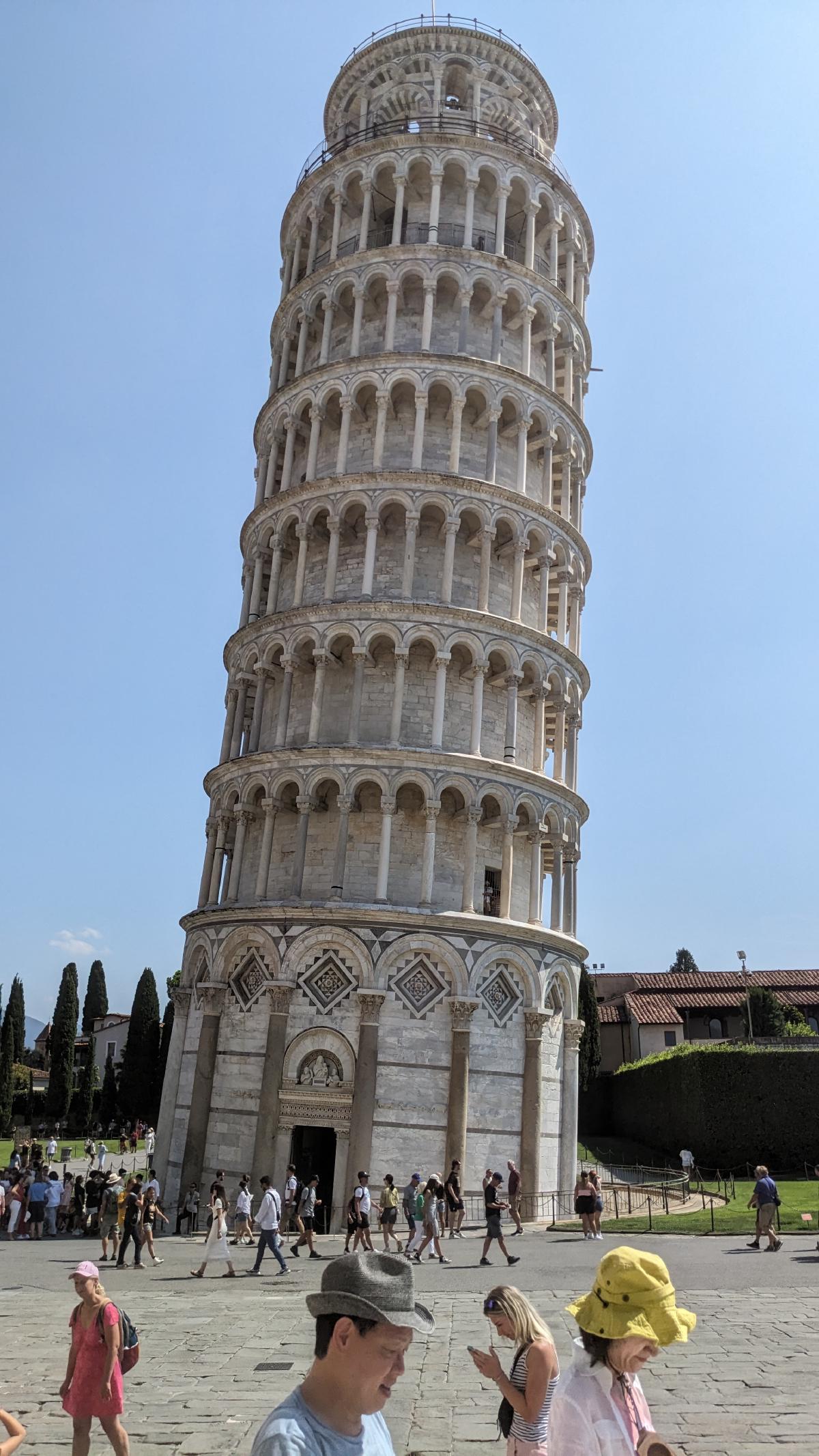Today I went to Pisa, which turned into slightly more of an adventure than I had expected.
The attraction, of course, is the torre pendente di Pisa or Leaning Tower of Pisa. That’s by the cathedral, and that in turn is about a mile or so from the station. I travelled to Pisa from Siena by train, then bus, then train, not dissimilar to my journey arriving in Siena on Sunday. Between the station and the cathedral is the Arno, a river of appropriate width and beauty as befits a city.
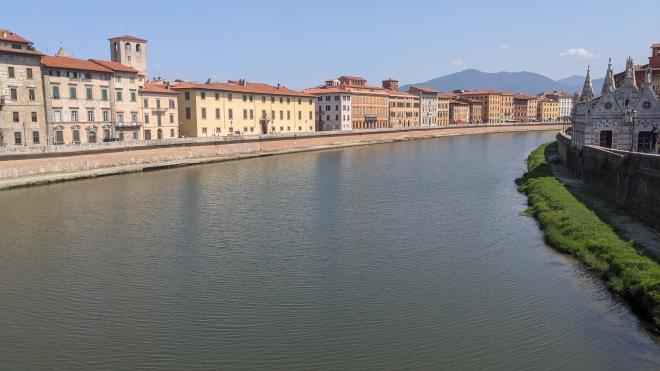
After crossing the river I continued following Google Maps (where would we be without Google Maps? I suppose we wouldn’t know, would we?) until I happened upon Cathedral Square and The Tower. The latter is known to us all, but I hadn’t realised that a) it’s white and b) it’s beautiful.
One needs a ticket to go up it (natch) and the visits are given a timeslot. Mine was 14:45, about two hours after I bought the ticket. I’d bought the expensive version of the ticket so I was allowed into a few of the other building too.
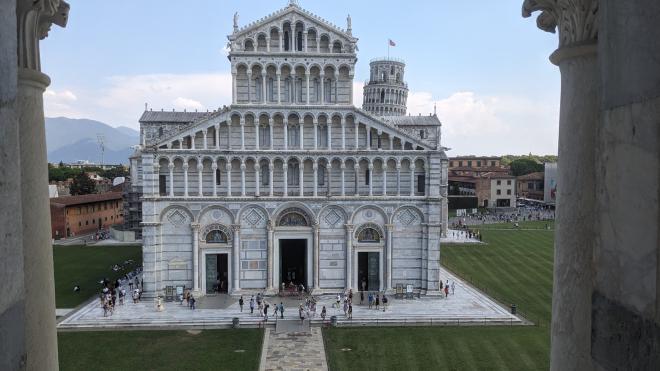
The cathedral, above with a comical photobomb from the LToP, is spectacular. Many complex stained glass windows and majestic paintings. The pulpit stems from the early 1300s and features a complex arrangement of pillars, sculpted figures and - oh, why don’t I just show you?
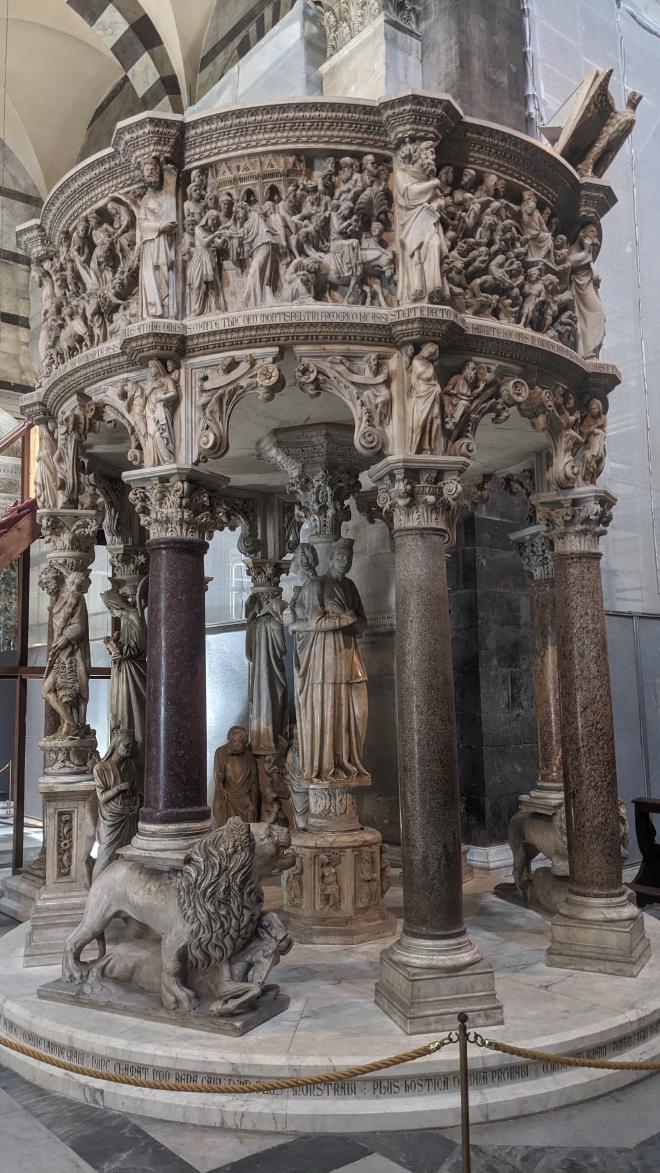
The cathedral has multiple altars. I’m not quite sure how that works out in practice - are they used simultaneously like the stages at Glastonbury? Or do they have spares in case the main altar goes unserviceable? Or do junior bishops start on the minor altars and dream one day of forgiving people from the main altar? Would such dreams be classified as “lust” and thus frowned on by Him? Any which way, here’s an altercation of altars:
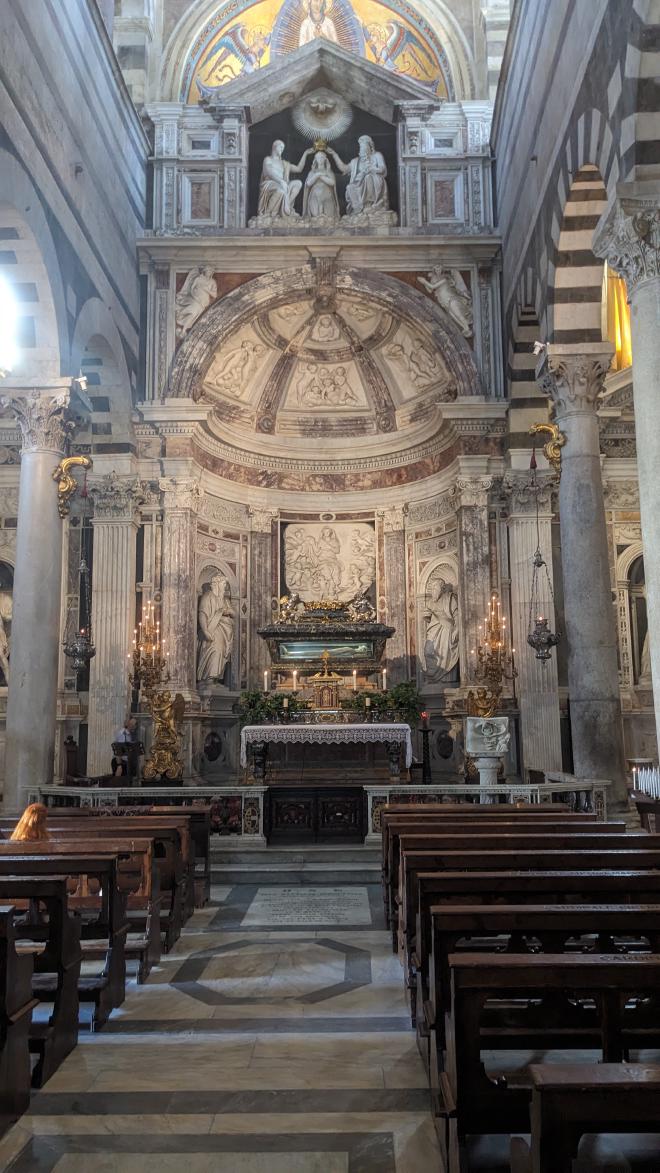
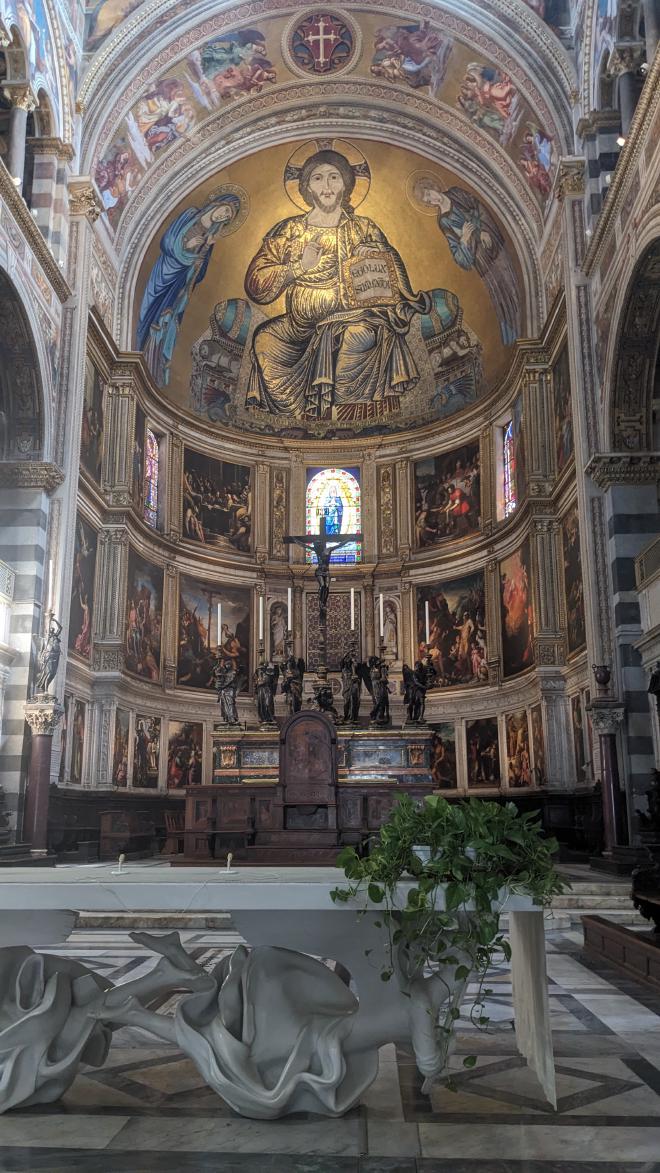
One of the other buildings has info about the tower (the one that leans). Some claim that it was intended that it lean from the start although that seems unlikely. The prevailing theory is that the builders pitched up on Tuesday, one day late, and started laying foundations. Some were laid on solid ground, qv parables galore, and - you’ve guessed it - some weren’t.
It started to lean, giving Galileo the opportunity to easily drop things from the top. Over time it started to lean a little bit more. Seemingly unrelated, on 17 March 1989, at 8:55 a.m., the Civic Tower in Pavia, Italy, collapsed, killing four people and injured fifteen. As a result, the LToP was closed to visitors over fears that it may suffer the same fate.
This does not make good reading when one is killing idling away time before ascending the LToP.
Long story short, in 1990 the tower leant at an angle of 5.5º. They excavated some soil from one side and it rocked back to “only” 3.97º. I feel this warrants a “don’t try this at home” warning.
The tower:
- is white
- was the cathedral bell tower
- has steps within the walls, but tower itself is hollow
There are 217 steps to the top. It’s the usual monument spiral staircase, but not so narrow that you can’t pass others (I’m looking at you, Scott Monument). Having walked around the top, admired the view, taken the photos, I looked for the way down and found some more steps going up.
There are 253 steps to the actual top (Wikipedia disagrees, but I counted them). The lean is not discernible from the top, but walking around the top is odd. The track is circular, as expected, but sometimes one is walking uphill, other times downhill. There was a robustly constructed gentleman who was spending rather more time than I felt comfortable with at the bottom of the “down” part, so time to leave.
While we’re here, let’s look inside. As discussed, it’s hollow:
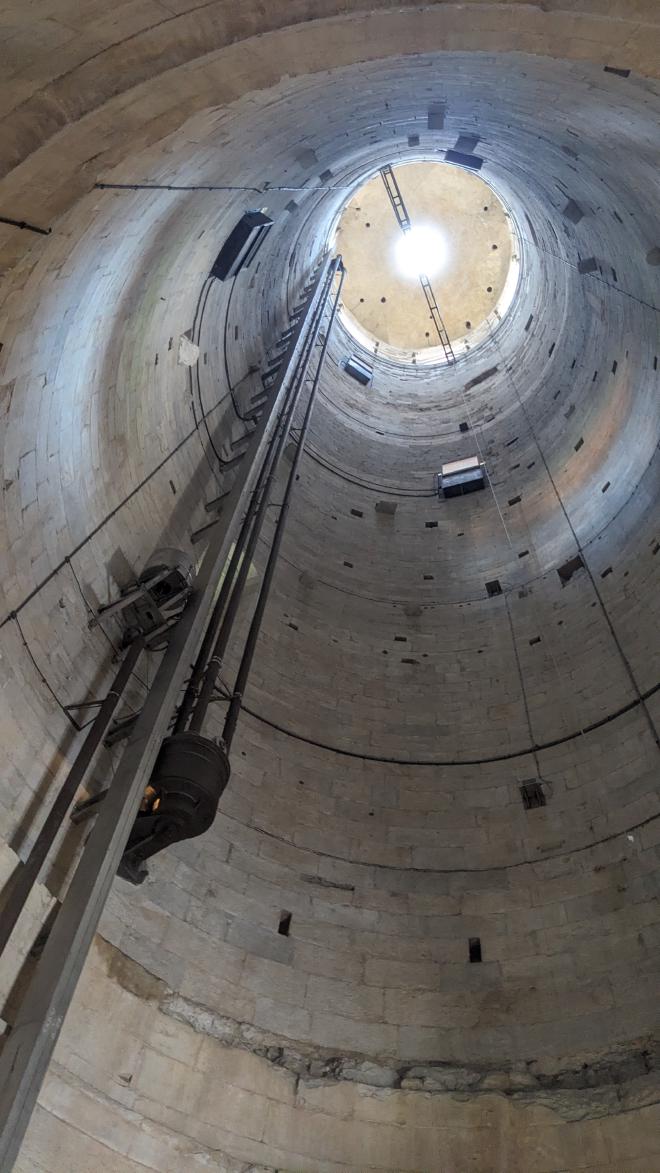
It was a bell tower, ergo it has bells:
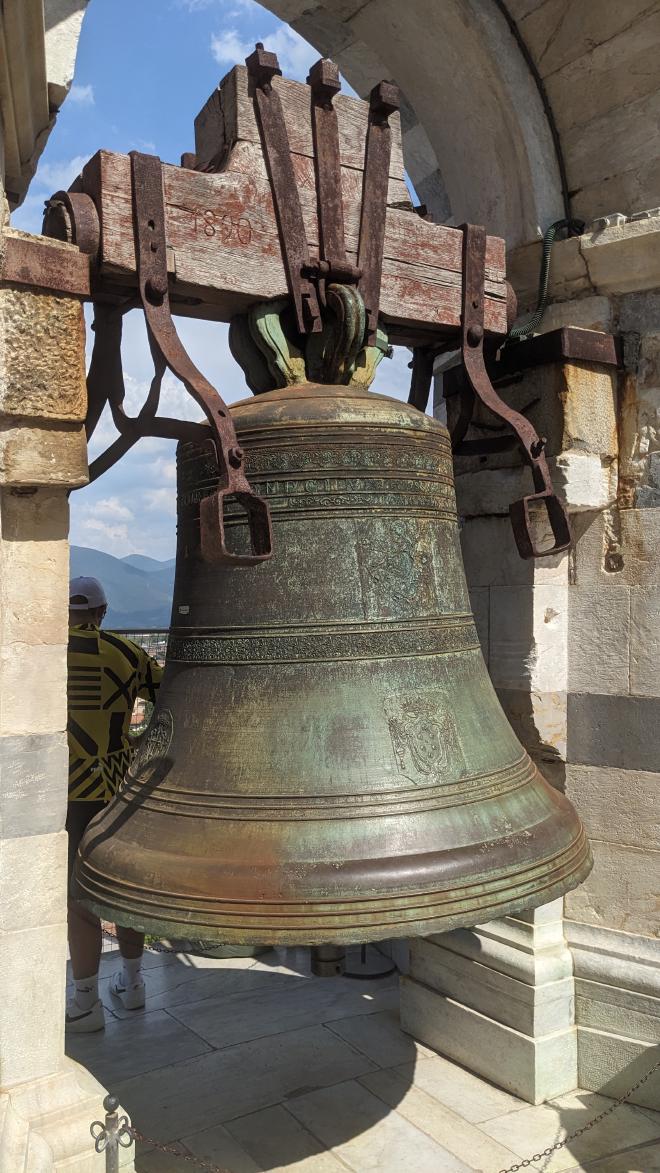
It comes complete with a view:
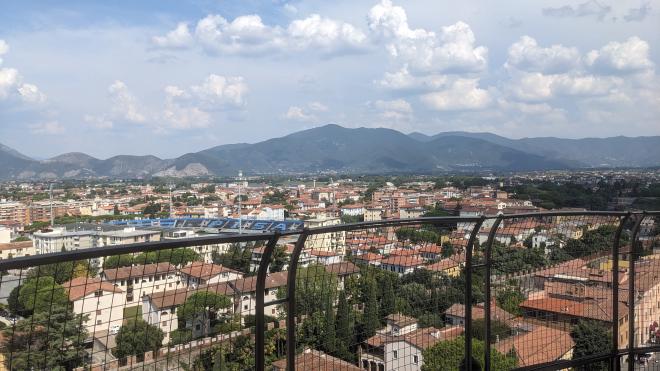
Wouldn’t it be highly amusing to take a photo of a friend / lover / someone else’s friend/lover pretending to hold up this leaning tower, saving zillions of people being showered in tower? Well, you’re not the first to think of that, sorry! Should you be tempted, this is how silly you will look:
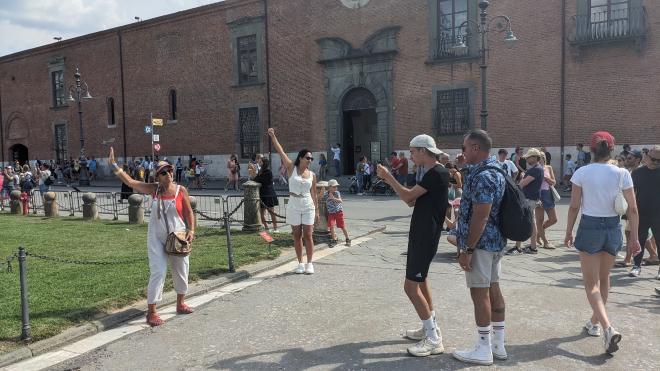
Time to go home: one train, one bus, one final train. The first two worked well; the last said on the announcement board “CAN”. My Italian isn’t as hot as it might be, but I worked out the next train, decorated with the possessive pronoun “my”, wasn’t running. Now what?
I happened upon an English conversation discussing options so I joined in. Decision: we’ll wait for the next one in an hour’s time. Meanwhile Scott, my new friend, suggested coffee so he and I went to a local bar. We walked in, he emitted some Italian, and food and drink arrived.
40 minutes later I check the station and find the next train cancelled too. I’m cutting a long story (trust me) short here. Scott and I decided to take a taxi back to Siena. We waited an hour for it to arrive having been promised it would be there in 45 minutes: some things don’t change. We split the €130 taxi bill 50/50.
